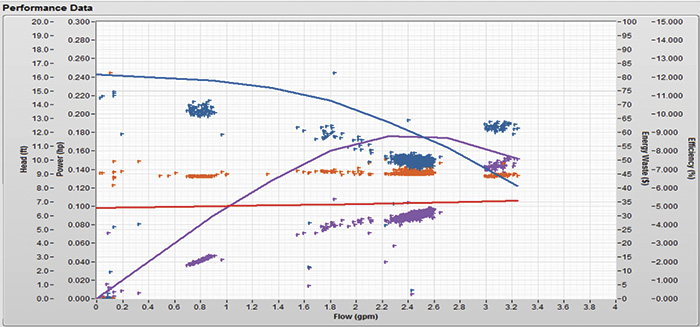04/11/2016
Regarding the vibration spectrum on page 12 of the February 2016 issue of Pumps & Systems ("Using Pump Efficiency Monitoring to Make Faster Decisions," Figure 1, see image below and read the whole article here), your question of what the spectrum is showing needs more information to enable an accurate answer:
- Where is the sensor located?
- What kind of pump?
- What is the orientation of the sensor? X, Y or Z axis?
- Is the data averaged, peak hold or instantaneous?
- Is the pump speed constant or changing?
- Is the flow steady or changing?
- How many vanes are on the impeller?
- Are the units root mean square, peak or other?
- What is the power required by the pump?
- Is this a Category I or II pump per International Standards Organization (ISO) 10816-7?
 Figure 1. Live data streaming in and displayed continuously by the PREMS system.
Figure 1. Live data streaming in and displayed continuously by the PREMS system.
See other Pumping Prescriptions articles here.

